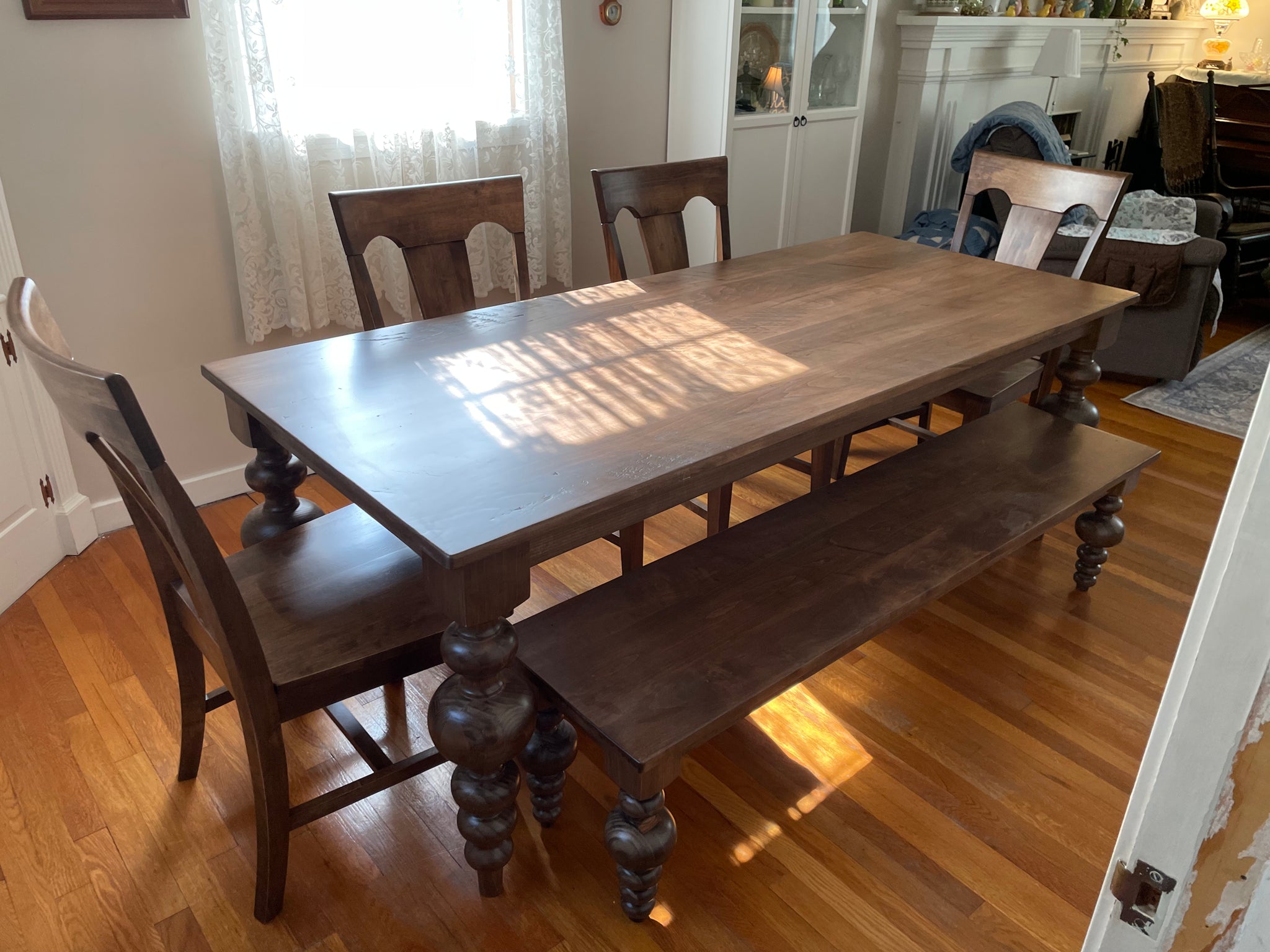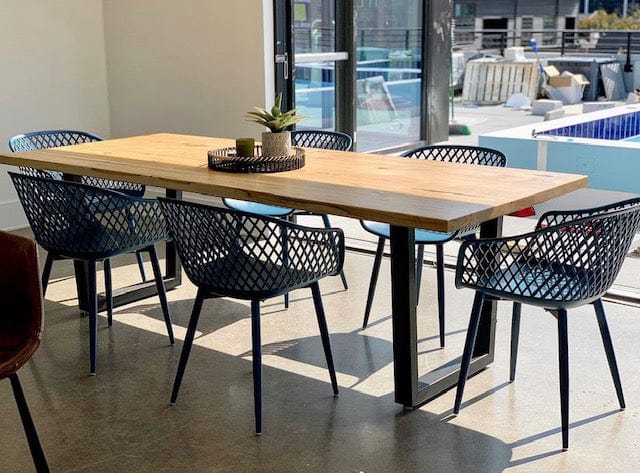From Standard to Modern: Discover the Perfect Dining Space Table Legs for Your Design
While classic styles such as cabriole and transformed legs stimulate a sense of ageless sophistication, modern styles like hairpin and geometric choices present a chance for striking visual passion. As you think about these elements, the concern remains: exactly how can you seamlessly integrate these diverse leg styles to produce a harmonious eating experience?
Understanding Table Leg Styles
The variety of dining-room table leg styles can dramatically influence both the looks and capability of the space. Each leg design contributes special useful functions and aesthetic components, catering to varied style preferences and use demands. Recognizing these styles is essential for choosing the ideal table that lines up with your total interior layout vision.
As an example, tapered legs provide a tidy, traditional appearance that can enhance a room's elegance, while pedestal bases supply stability and make best use of legroom, making them ideal for smaller rooms. Hairpin legs, a hallmark of mid-century modern-day design, introduce a commercial panache, enabling for a ventilated, open feeling. Trestle legs evoke rustic charm, giving robust assistance and a feeling of timelessness.
Wood legs can bring warmth and appearance, whereas metal options typically convey a sleek, modern vibe. Eventually, understanding table leg designs is necessary for developing a natural eating area that reflects personal style while making certain practicality and convenience.
Standard Table Leg Options
When selecting dining-room table legs, typical alternatives usually personify classic beauty and workmanship. These layouts reflect a rich heritage and a commitment to quality, making them ideal for those who appreciate traditional visual appeals.
Among one of the most iconic standard leg styles is the cabriole leg, characterized by its elegant curved shape. This layout commonly features attractive carvings and is most frequently discovered in Queen Anne and Chippendale furnishings. Another preferred choice is the transformed leg, which flaunts a series of smooth, rounded forms that give a timeless look while preserving security.
Moreover, the straight leg, while straightforward, uses a tough and unadorned framework that can blend flawlessly with a variety of tabletop styles. For those drawn to ornate detailing, claw-and-ball feet legs evoke a feeling of magnificence and can function as a spectacular centerpiece in any eating area.
Last but not least, stand bases, although not purely legs, provide an alternate typical choice that enables ample legroom and can be wonderfully sculpted. Each of these typical leg styles adds to the total atmosphere of an eating room, marrying function with visual appeal.

Modern Table Leg Designs
Modern table leg designs use a varied series of designs that emphasize clean lines and ingenious materials. These designs often focus on performance while working as site web striking focal points within a dining area. Minimal looks are prevalent, with legs crafted from products such as metal, glass, and crafted Related Site wood, which add to a airy and modern feel.
One popular style is the hairpin leg, defined by its slim, tapered structure that gives stability without frustrating the tabletop (dining room table legs). This style is frequently discovered in mid-century contemporary furnishings and can effortlessly enhance various table forms. One more trend is making use of geometric forms, where legs might handle angular or asymmetrical kinds, adding visual rate of interest and a touch of artistry

Mixing Designs for Special Spaces
Usually, property owners look for to develop distinct dining rooms that show their personal style by blending various style components. This strategy enables the consolidation of diverse aesthetic appeals, leading to an unified yet distinct environment. For example, matching a rustic wooden table with sleek, modern-day metal legs can produce an attractive contrast that raises the area's general allure.
Additionally, incorporating vintage table legs with contemporary tabletops can stimulate a sense of history while preserving a modern perceptiveness. go to this web-site Such combinations not only display private taste however likewise encourage creativity, enabling property owners to curate a room that feels both individual and inviting.
Shade plays an essential function in this mixing process; choosing table legs that enhance or contrast with the existing color pattern can improve visual passion. Whitewashed legs can soften the boldness of a dark table surface, creating a well balanced visual.
Tips for Choosing the Right Legs
Choosing the right table legs is essential for accomplishing both performance and visual appeal in your dining area. Begin by taking into consideration the overall style of your room. Standard setups take advantage of legs that feature elaborate makings or turned styles, while modern rooms may call for smooth, minimalist styles.
Next, assess the elevation and security of the legs. dining room table legs. Common table range between 28 to 30 inches in height, so make sure the legs complement this dimension for comfort. Furthermore, durable products, such as wood or metal, can improve security and long life
Evaluate the leg form too-- options include directly, tapered, or pedestal designs. Straight legs use a traditional appearance, while conical legs can include a touch of style. Pedestal bases give sufficient legroom and are suitable for smaller sized areas.
Verdict
In recap, picking the excellent eating area table legs calls for careful consideration of both modern-day and typical designs. Conventional options such as cabriole and transformed legs supply ageless elegance, while modern designs like hairpin and geometric shapes supply a contemporary touch. By balancing leg style, height, and material with the general décor, a natural and welcoming atmosphere can be attained. Eventually, the selected table legs should mirror the preferred aesthetic, boosting the eating experience within the space.
The selection of dining area table leg styles can substantially influence both the appearances and performance of the room. Inevitably, comprehending table leg styles is important for developing a cohesive dining area that mirrors personal style while making certain functionality and convenience.One of the most iconic standard leg styles is the cabriole leg, defined by its elegant curved form. Straight legs supply a timeless look, while conical legs can include a touch of sophistication.In recap, choosing the optimal eating area table legs calls for cautious factor to consider of both traditional and modern-day designs.